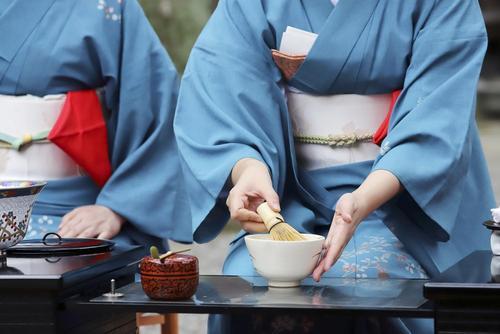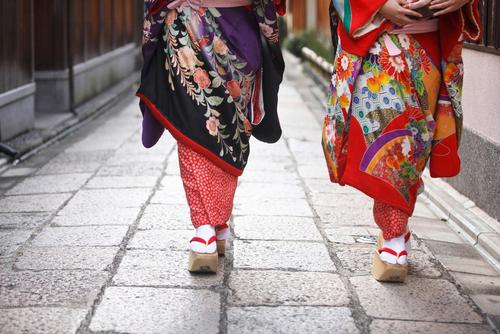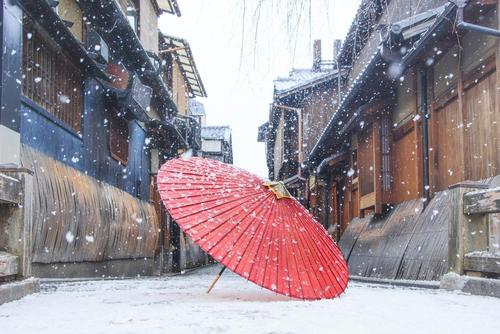In modern Japan, opportunities to wear kimonos are often very limited, such as coming-of-age ceremonies, wedding receptions, and fireworks displays.
Some people may also feel a sense of tension when putting on a kimono, and strangely, find that their back straightens.
Kimono rental shops catering to tourists from overseas seem to be doing very well, and there is no doubt that kimonos are attractive to foreigners as well.
While you're here, why not learn about the culture and history of kimonos so you can smoothly answer questions from people from overseas?
We will introduce you to the culture of kimono, its history and appeal.
What is kimono culture?

Let's start by learning the basics about Japanese kimono culture.
Kimono culture and the country of Japan
The kimono is Japan's national dress. Surrounded by the sea and mountains, surrounded by abundant nature and the changing seasons, our ancestors who lived in Japan developed their own unique aesthetic sense and expressed it in their kimonos.
Some kimonos are made with materials and designs that can only be worn during certain periods, in order to adapt to the delicate changes of Japan's four seasons.
This is truly a luxury that can only be found in kimonos.
The crystallization of Japanese craftsmanship
Kimonos and obi sashes are made using Japanese craftsmanship.
The techniques have been passed down as traditional crafts in various regions, including Nishijin weaving, Kyo-yuzen, Kaga-yuzen, Oshima Tsumugi, and Kihachijo.
Kimono as traditional culture
Kimono, which has been passed down while changing throughout its long history, is one of Japan's proud traditional cultures.
Kimono are unique in that they bring out the inner strength, flexibility, and modesty that are unique to Japanese people.
Although there are few opportunities to wear kimonos in everyday life, they still find a place in important occasions.
Kimono are essential for events and ceremonies such as Shichigosan, Coming of Age Ceremonies, and shrine visits, as well as lessons in tea ceremony, flower arranging, and Japanese dance, and traditional Japanese martial arts such as kendo and kyudo.
Wearing a kimono to see a Kabuki or Noh performance will lift your spirits and attract attention from those around you.
Another wonderful thing about kimonos is that if they are properly cared for and maintained, they can be passed down through generations, from grandmother to mother, and from mother to daughter.
Kimono and Japanese
Have you noticed that some of the expressions you use every day, and lines in novels and dramas, are derived from kimonos?
"Straighten one's collar," "part ways," "to make sense," "to be on the proper page," etc.
That is how deeply rooted kimono is in the lives of Japanese people.
About the types of kimono

Do you understand how deeply woven the kimono is into the lives of Japanese people?
There are designated occasions for wearing kimono depending on the type. We will also introduce these rules.
formal wear
・Mourning clothes
This is a plain black formal mourning attire with five crests worn by relatives at wakes and funerals.
・Black formal kimono
This kimono has a pattern drawn on the hem and is the first formal attire for married women. It is worn at weddings of relatives and other ceremonies and ceremonies.
The pattern crosses the seams to form a single picture.
・Full-length kimono
This is the first formal dress for unmarried women and is also called o-furisode. It is characterized by long sleeves and gorgeous patterns. This furisode is the bridal attire worn at wedding receptions.
casual wearing
・Colored formal kimono
This kimono has a pattern on the hem that is not black, and is worn by married women or unmarried women who have graduated from wearing furisode.
・Visiting clothes
Semi-formal attire worn by women, regardless of whether they are single or married. It is often gorgeous and can be worn in a wide range of situations, especially formal occasions.
・Furisode
Formal wear for unmarried women, also worn at Coming-of-Age ceremonies. Depending on the length of the sleeves, they are divided into furisode, medium furisode, and small furisode.
Outing wear
・Tsukesage
Unlike formal kimonos, which are dyed after cutting white fabric, these kimonos are patterned while still in the roll of fabric, resulting in understated designs.
It is perfect for occasions where you don't need to be as formal as with a visiting kimono.
・Small pattern
A kimono with a repeating pattern all over.
It can be worn as a slightly stylish outfit for lessons, going out with friends, going to the theater, etc.
・Tsukesage Komon
This is a kimono with a small pattern.
Street wear, everyday wear, yukata
・Tsumugi
Previously, it was considered to be everyday wear, but now it is acceptable to wear it when going out in casual situations.
However, no matter how expensive it is, it is not advisable to wear it in formal settings.
・Kasuri (splash)
Like tsumugi, it was originally meant as everyday wear, but nowadays it is also worn going out.
・Kihachijo
This is an everyday kimono dyed in stripes and checks using the broth of plants that grow wild on Hachijojima.
·wool
Along with cotton, it is a material commonly used for everyday kimonos.
·cotton
Cotton yukatas are very popular at summer events such as fireworks displays because of their affordability and ease of putting on.
The charm of kimono

There are so many types of kimono that it can be difficult to remember them all. At a wedding, the mother of the bride and groom wears a black kimono, and the bride wears a long-sleeved kimono. If you check the different types according to the occasion, you won't forget.
Now, let me tell you about the appeal of kimono.
Kimono brings out inner beauty
Wearing a kimono restricts movement, so you are required to behave differently than usual. Your speech will also be regulated to match your kimono and behavior.
When you wear a kimono, you have to pay attention to your mannerisms and the words you use, and you can discover a different side of yourself as a Japanese woman.
A side of traditional crafts
Another major feature of kimonos is that some are decorated with artistic designs.
High-quality items such as Kaga Yuzen, Nishijin-ori, and Oshima Tsumugi can be passed down from parent to child for generations if they are carefully cared for.
The charm of kimono in each season
One of the charms of kimonos is that you can enjoy the feeling of the season depending on the material and pattern.
In this case, it is considered stylish to wear a kimono two weeks to a month in advance, so if you wear it in February, you can enjoy the plum blossom pattern that will bloom in March.
In addition, one of the great things about kimonos is that you can express a sense of the season not only through the kimono and obi, but also through accessories such as sandals, bags, and half-collars.
summary
Kimono is a uniquely Japanese culture that is strongly linked to the country, traditions, craftsmen, and language, so it's a good idea to remember the basic types and the appropriate occasions for wearing them.
As more information about kimono becomes available, the way we see people wearing kimono will change.
Kimono bring out the inner beauty of the wearer and allow you to enjoy the seasons, and they are also a traditional craft, making them very popular with foreign tourists.
If you can fully understand and talk about the charm and culture of kimono, your own charm will increase.
Mini lesson corner
Learn about Japan and the Japanese language!
"Understanding the meaning of kimono patterns in 90 seconds"
This article has been partially re-edited by KARUTA from an article originally published on "Nihongo Biyori."
Any unauthorized reproduction or use of the contents, text, images, illustrations, etc. of this website is strictly prohibited.
